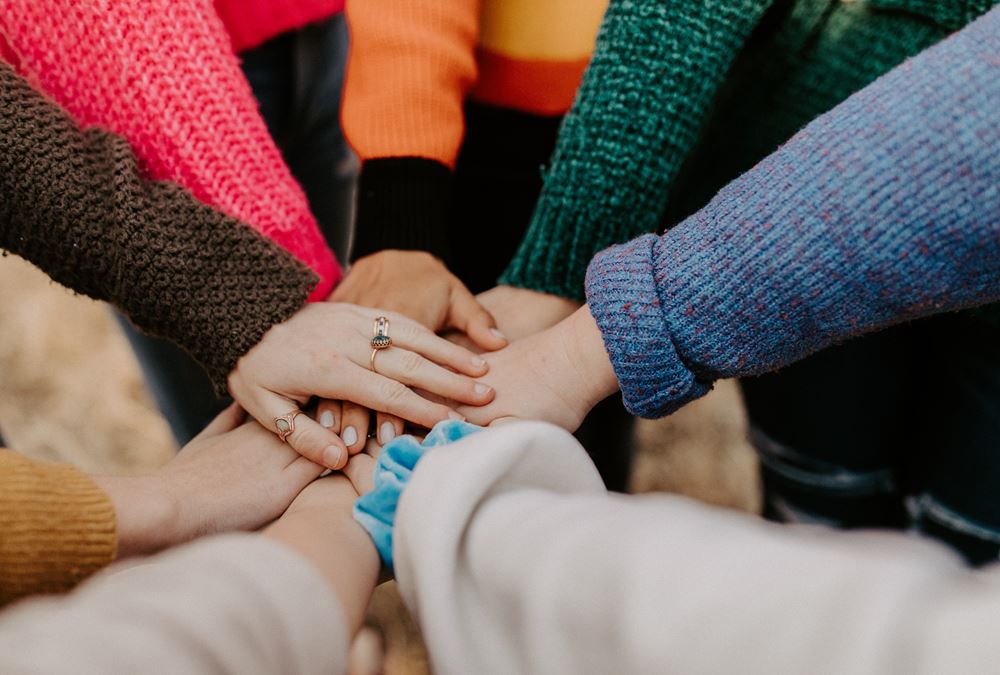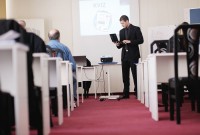- Home
- Business Processes
- Industry Knowledge
- Aerospace Industry
- Automotive Industry
- Banking Domain
- BFSI Industry
- Consumer/ FMCG Industry
- Chemicals Industry
- Engineering & Construction
- Energy Industry
- Education Domain
- Finance Domain
- Hospitality Domain
- Healthcare Industry
- Insurance Domain
- Retail Industry
- Travel and Tourism Domain
- Telecom Industry
- Leadership Skills
- eLearning
- Home
- Leadership Skills
- Leadership & Management
- Theories of Team Development
Theories of Team Development
The development of teams is an ongoing process because the composition of the team may keep on changing. The new members may join and the old members may leave the team. The team members pass through several stages for the development of the team and there has been a lot of research to identify these stages. In this article, we discuss the common theories of team development.
Team is formed as a result of interactions and influence of members who strive for the achievement of common goal. After the formation the teams take time to develop and usually follow some easily recognizable stages, as the team-members transition from being a group of strangers to becoming a unified integrated team chasing a common goal. In this process, the team members try to understand others behavior, realize the appropriateness of the behavior and the roles of the team members. A team is not formed merely by declaring some individuals as a team. A lot of research has been done on group formation and development, and different theories of group development have been suggested. Given below is a list of commonly known theories on team/group development:
- Bennis & Shepard, 1956;
- Bion, 1961;
- Gibb, 1964;
- Schutz, 1958, 1982;
- Tuckman, 1965;
- Tuckman & Jensen, 1977;
- Yalom, 1970;
- Tuckman, 1977;
- Kormanski & Mozenter, 1987;
Now we will discuss some popular theories on team development in detail:
Tuckman’s Five Stage Team Development Model:
Psychologist Bruce Tuckman first came up with the memorable phrase "forming, storming, norming, and performing" back in 1965. The “Forming – Storming – Norming – Performing” model of group development maintained that these phases are all necessary and inevitable in order for the team to grow, to face up to challenges, to tackle problems, to find solutions, to plan work, and to deliver results. This model has become the basis for subsequent models. He used it to describe the path to high-performance that most teams follow. Later, he added a fifth stage that he called "adjourning." Let us learn the five stages briefly:
Forming: This is the first stage of team development. In this stage the members try to explore and understand the behavior of the team members. They make their efforts in understanding the expectations of the team members. At this stage they are polite and try to find out how to fit into the team.
Storming: In the second stage, members start competing for status, leadership and control in the group. Individuals understand others behavior and assert their role in the group. As a result inter-personal conflict starts. Members try to resolve the issues related to the task and working relations. They also resolve the issues related to the role of the individual in the group.
Norming: The members start moving in a cohesive manner. They establish a balance among various conflicting forces. They develop group norms and consensus for the achievement of the group goal. At this stage, cooperative feelings develop among the team members.
Performing: In this stage, the team makes effort for the performance of task and accomplishment of objectives. The established pattern of relationships improves coordination and helps in resolving conflicts. Members trust each other and extend their full cooperation for the achievement of the group goal.
Adjourning: As you must be aware that the team is formed for some purpose. When this purpose is fulfilled, the team may be adjourned. Thus, the breaking up of the team is referred to adjournment.
Kormanski & Mozenter (1987) Stages of Team Development:
Kormanski & Mozenter (1987) integrated the various theories and suggested the following stages of team development. These stages are sequential (each stage is followed by the next one). Each stage has a task outcome and a relationships outcome. Kormanski and Mozenter have identified following stages of team development :
- Awareness
- Conflict
- Cooperation
- Productivity, and
- Separation
1. Awareness: At this stage individuals get to know each other. By knowing the goals of the team they commit themselves to the goals. The members get to know and accept to work together for a goal about which they have enough knowledge.
2. Conflict: At the first stage (awareness) the members know the team goals and accept to work together; but this is at the surface level. At the second stage they search and begin to ask questions. As a result several matters are clarified. They also fight with each and in this process of interaction resolve any hostilities they may have, resulting in the feeling of belonging to the group.
3. Cooperation: In the third stage the members own the team goals and get involved in those goals. Having resolved feelings, they also support each other.
4. Productivity: This is the stage of real achievement of the goals/outcomes, and the team members achieving these objectives feel proud of their achievement.
5. Separation: Having accomplished the goals or the outcomes, some task-specific teams may decide to get dissolved, or a time-bound time comes to a close. The excellent work done by the members is recognized, and the team members have a high sense of satisfaction of working with each other. This is the stage of closure of the team, or closure of one task on which the team was working.
The following table provides a summary of task outcomes and relationships outcomes at each stage as defined in the model:
|
A Model of Team Building |
|||
|
Stage |
Theme |
Task Outcome |
Relationship Outcome |
|
One |
Awareness |
Commitment |
Acceptance |
|
Two |
Conflict |
Clarification |
Belonging |
|
Three |
Cooperation |
Involvement |
Support |
|
Four |
Productivity |
Achievement |
Pride |
|
Five |
Separation |
Recognition |
Satisfaction |
Related Links
You May Also Like
-
Lewin’s Change Management Model
Lewin's change management model is a framework for managing organizational change. Lewin's methodology of different Leadership Styles recognizes three distinct stages of change - creating the perception; moving toward the new desired level of behavior and, ensuring new behavior as the norm.
-
The psychodynamic approach to leadership has its roots in the work done by Sigmund Freud. These involved psychological theories of personality development and explaining leadership using psychoanalytic concepts. It tries to define a person is in terms of personality traits. Personality structured into three parts (i.e., tripartite) - the id, ego, and superego.
-
Five Factors Model (FFM) also known as Five-Factor Personality Model is based on five broad personality traits which are extraversion, neuroticism, openness to experience, agreeableness, and conscientiousness represented by acronym OCEAN, these traits are often referred to as the “Big Five”.
-
Normative leadership theories are built on moral principles and tell leaders how they ought to act. Victor Vroom formulated the normative model of leadership that specifically address leader behavior explicitly built on moral principles or norms. Normative leadership theories tell leaders how they should act to raise the moral performance inside the working group and manage their different responsibilities.
-
Leadership Traits – A great List
What are the qualities and characteristics of a good leader? Great leaders possess core leadership traits and skills. The list includes the most important leadership qualities and skills to look for in a great leader. These are must-have traits of a powerful and successful leader, the qualities a leader possess to be great.
-
Transactional Theory of Leadership
Transactional leadership theory is based on the concept of rewards and punishments. The transactional management approach assumes that the desires of the leader and follower are different and leaders give followers something in exchange for getting something they want. Transactional leaders expect followers to be compliant and focuses on structure, instruction, monitoring, organization, or performance to get tasks completed on time.
-
Jung first introduced his personality theory and explained that all humans have a natural impulse to relate meaningfully to the world through productive work and people through significant relationships. He used four psychological functions - thinking and feeling (rational functions) and sensation and intuition (irrational functions). He also used introversion and extraversion and its impact on appropriate leader behaviors.
-
Leadership traits refer to personal qualities that define effective leaders. Here are the major leadership qualities that can make someone a good leader. Five key traits that are common in leaders can be learned and sharpened with time.
-
Team leadership theory is a recent leadership theory that does not discriminate between the leader and the other team members. The approach considers contributions from each team member to be critical for organizational success. This approach focused on the overall team effectiveness and team problems are diagnosed and action is taken to remediate weakness. This approach provides for taking corrective action when the leader deems necessary.
-
The Leader-Member Exchange Theory (LMX), also called the Vertical Dyad Linkage Theory is a relationship-based approach that focuses on the two-way (dyadic) relationship to get the best from all team members. How leaders maintain their position in groups and develop an exchange with each of their subordinates. How leaders and members develop relationships that can contribute to growth or hinder development.
Explore Our Free Training Articles or
Sign Up to Start With Our eLearning Courses

About Us
Learning
© 2023 TechnoFunc, All Rights Reserved










